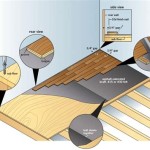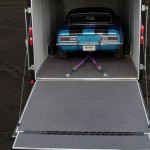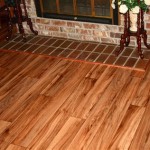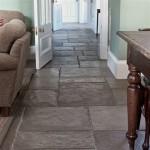Tile Flooring Costs Per Square Foot: A Comprehensive Guide
Tile flooring is a popular choice for homeowners and builders due to its durability, versatility, and aesthetic appeal. Understanding the associated costs per square foot is crucial for budgeting and planning a flooring project effectively. This article provides a comprehensive overview of the factors influencing tile flooring costs, different tile types, installation expenses, and regional price variations.
The overall cost of tile flooring is determined by a combination of material prices, labor expenses, and any necessary preparatory work. While the per-square-foot cost of the tile itself provides a baseline, additional costs can significantly impact the total project budget. Therefore, a thorough assessment of all contributing factors is essential before embarking on a tile flooring installation.
Factors Influencing Tile Flooring Costs
Several factors contribute to the variation in tile flooring costs per square foot. These factors can be broadly categorized into material costs, labor costs, and site-specific considerations.
Material Costs: The type of tile selected is a primary driver of the overall cost. Different materials such as ceramic, porcelain, natural stone (granite, marble, slate, limestone), and glass vary significantly in price. The dimensions of the tile also play a role; larger tiles generally require less labor to install but may be more expensive per piece, while smaller mosaic tiles often have a higher installation cost due to the increased complexity involved.
The quality and grade of the tile also impact the price. High-quality tiles with superior durability and aesthetic appeal generally command a higher price than lower-grade alternatives. The finish of the tile, such as polished, matte, or textured, can also affect the cost.
Furthermore, the quantity of tile purchased can influence the price per square foot. Bulk purchases may qualify for discounts, especially when dealing directly with manufacturers or large retailers. It's also important to factor in waste; typically, an extra 5-10% of tile should be purchased to account for cuts, breakage, and future repairs.
Additional materials required for the installation, such as mortar, grout, sealant, and underlayment, also contribute to the overall cost. The specific type of mortar and grout required will depend on the type of tile and the substrate onto which it is being installed. High-performance mortars and grouts, designed for specific applications like wet areas or high-traffic zones, typically have a higher price point.
Labor Costs: Installation costs vary based on the complexity of the project, the experience of the installer, and geographical location. Intricate patterns, custom designs, and difficult layouts will increase labor costs. Similarly, the time required to prepare the subfloor can also add to the overall expense.
Experienced and licensed tile installers generally charge a higher hourly rate than less experienced contractors. However, their expertise can ensure a high-quality installation and minimize the risk of future problems. Obtaining multiple quotes from different installers is recommended to compare rates and assess their qualifications.
The preparation of the subfloor is a critical aspect of tile installation and can significantly impact labor costs. If the subfloor is uneven, damaged, or requires structural reinforcement, additional labor may be required to level and prepare it properly. This can involve patching cracks, applying self-leveling compounds, or even replacing the subfloor entirely.
Site-Specific Considerations: The location and accessibility of the installation area can also affect the overall cost. Installations in hard-to-reach areas, such as small bathrooms or oddly shaped rooms, may require more time and effort, resulting in higher labor costs. Similarly, if the installation area is located on a high floor of a building or requires navigating narrow corridors, the cost of transporting materials may increase.
The removal and disposal of existing flooring can also add to the project's cost. Depending on the type of existing flooring, such as old tile, vinyl, or carpet, the removal process can be time-consuming and labor-intensive. Disposal fees may also apply, depending on local regulations.
Permits and inspections may be required for certain tile flooring projects, especially in new construction or renovation projects involving structural changes. These fees can vary depending on the location and the scope of the project.
Tile Types and Their Associated Costs
The selection of tile types significantly impacts the overall cost per square foot. Different materials offer varying levels of durability, aesthetic appeal, and suitability for specific applications.
Ceramic Tile: Ceramic tile is a popular and relatively affordable option. It is made from clay that is fired at high temperatures and is available in a wide range of colors, sizes, and styles. Ceramic tiles are suitable for both floors and walls and are commonly used in bathrooms, kitchens, and entryways. The cost of ceramic tile typically ranges from $1 to $5 per square foot, excluding installation.
Porcelain Tile: Porcelain tile is a denser and more durable type of ceramic tile that is fired at even higher temperatures. It is less porous than ceramic tile, making it more resistant to water damage and staining. Porcelain tiles are suitable for high-traffic areas and outdoor applications. The cost of porcelain tile typically ranges from $3 to $10 per square foot, excluding installation.
Natural Stone Tile: Natural stone tiles, such as granite, marble, slate, and limestone, offer a luxurious and unique aesthetic. Each stone tile has its own natural variations in color, pattern, and texture. Natural stone tiles are durable and long-lasting but require proper sealing and maintenance. The cost of natural stone tile typically ranges from $5 to $50 or more per square foot, excluding installation.
Glass Tile: Glass tile is a visually appealing option that can add a touch of elegance and sophistication to any space. It is available in a wide range of colors, shapes, and sizes and is commonly used for backsplashes, accent walls, and decorative borders. Glass tiles are non-porous and easy to clean but can be more prone to scratching than other tile types. The cost of glass tile typically ranges from $8 to $30 or more per square foot, excluding installation.
Quarry Tile: Quarry tile is a type of unglazed ceramic tile that is made from natural clay and shale. It is highly durable and slip-resistant, making it a suitable choice for commercial kitchens, industrial spaces, and outdoor patios. The cost of quarry tile typically ranges from $2 to $8 per square foot, excluding installation.
Mosaic Tile: Mosaic tiles are small tiles that are arranged in a pattern or design. They can be made from a variety of materials, including ceramic, porcelain, glass, and stone. Mosaic tiles are often used for backsplashes, accent walls, and decorative borders. The cost of mosaic tile typically ranges from $7 to $40 or more per square foot, excluding installation.
Installation Costs and Subfloor Preparation
Installation costs are a significant component of the overall tile flooring project budget. These costs vary depending on the complexity of the project, the type of tile selected, and the experience of the installer.
Basic Installation: Basic tile installation typically involves installing standard-sized tiles in a simple pattern on a level subfloor. The cost of basic tile installation typically ranges from $3 to $7 per square foot.
Complex Installation: Complex tile installation involves installing large-format tiles, intricate patterns, or custom designs. It may also involve additional subfloor preparation or the installation of radiant heating systems. The cost of complex tile installation typically ranges from $7 to $15 or more per square foot.
Subfloor Preparation: Proper subfloor preparation is essential for a successful tile installation. The subfloor must be clean, level, and structurally sound. If the subfloor is uneven or damaged, it may need to be repaired or replaced before the tile can be installed. The cost of subfloor preparation can range from $1 to $5 or more per square foot, depending on the extent of the work required.
Removal and Disposal: The removal and disposal of existing flooring can also add to the overall cost of the project. The cost of removing and disposing of old flooring can range from $1 to $3 per square foot, depending on the type of flooring and local disposal fees.
When budgeting for a tile flooring project, it is essential to factor in all potential costs, including material costs, installation costs, subfloor preparation, and removal and disposal fees. Obtaining multiple quotes from different installers can help ensure that you get the best possible price for the project.
In addition to the factors mentioned above, regional price variations can also affect the overall cost of tile flooring. Labor costs and material prices may vary depending on the location and local market conditions.

Ceramic Tile Flooring Installation Cost Fixr

How Much Does Tile Installation Cost Per Square Foot Pro Depot

How Much Does Tile Installation Cost 2024 Guide

Ceramic Tile Flooring Installation Cost Fixr

What Is The Average Cost To Install Tile Floors Rubi Blog Usa

Cost To Install Vct Tile S Fixr

Tile Flooring Installation Cost Floor S Fixr

How Much Does Tile Installation Cost 2024 Guide

Tile Flooring Installation Cost Floor S Fixr

Cost Per Square Feet Paper Flooring Google Search
Related Posts








